Complete Solutions to Solved Quesitons of chapter NEET PREVIOUS YEAR of Class 11 book with complete answers and questions
| Class 11 | PHYSICS |
| Chapter | NEET PREVIOUS YEAR |
| CP SINGH | Solved Quesitons |
| Number Of Questions | 25 |
| Academic Year | 2023-24 |
If energy `(E )` , velocity `(V)` and time `(T)` are chosen as the fundamental quantities , the dimensions formula of surface tension will be
View SolutionA particle of unit mass undergoes one-dimensional motion such that its velocity varies according to
`v(x) = beta x^(-2 n)`
where `beta` and `n` are constant and `x` is the position of the particle. The acceleration of the particle as a function of `x` is given by.
View SolutionA ship A is moving Westwards with a speed of `10kmh^(-1)` and a ship B 100km South of A is moving northwards with a speed of `10kmh^(-1)`. The time after which the distance between them shortest is
View SolutionThree blocks `A` , `B` and `C` of masses `4kg` , `2kg` and `1kg` respectively are in contact on a frictionless surface, as shown. If a force of `14N is applied on the `4kg` block, then the contact force between `A` and `B` is.
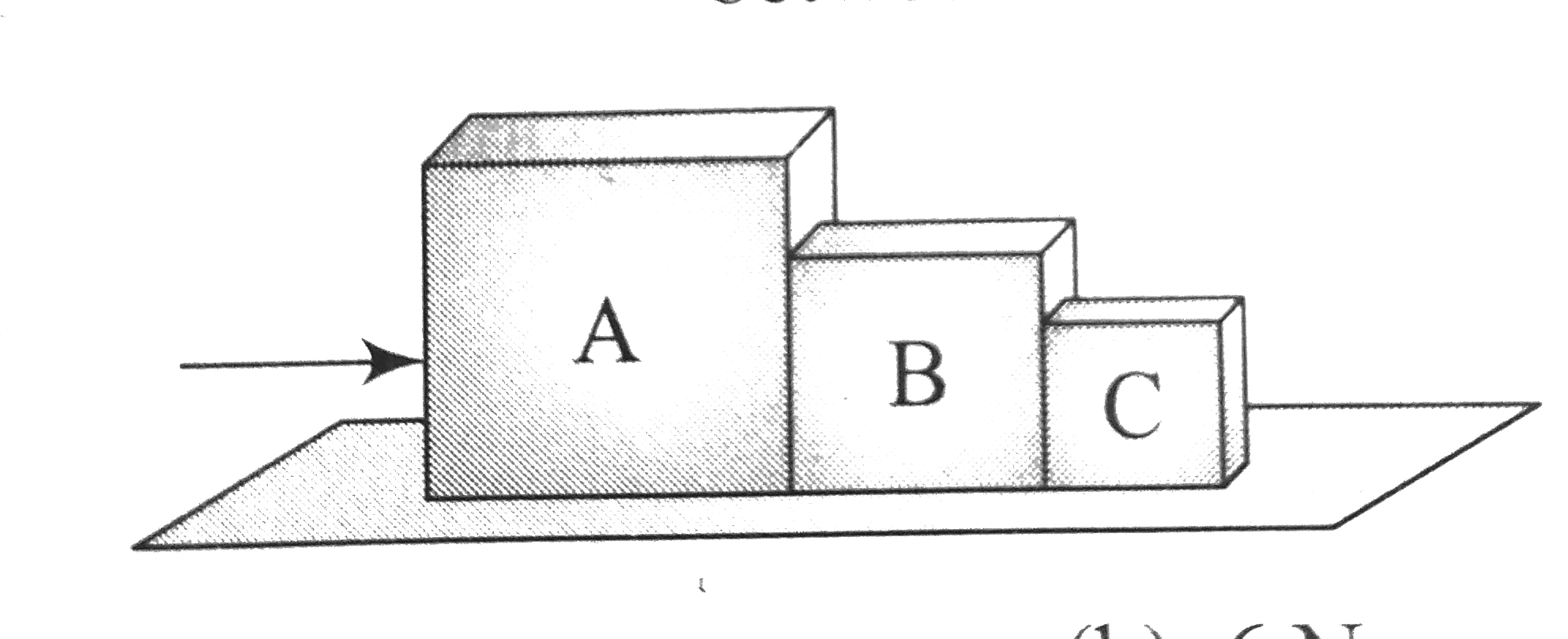
View SolutionA block `A` of mass `m_(1)` rests on a horizontal table. A light string connected to it passes over a frictionless pulley at the edge of table and from its other end another block `B` of mass `m_(2)` is suspended. The coefficient of knetic friction between the block and table is `mu_(k)` . When the block `A` is sliding on the table, the tension in the string is.
View SolutionA bolck of mass `10 kg` is moving in x-direction with a constant speed of `10 m//s`. it is subjected to a retardeng force `F=-0.1 x J//m`. During its travel from `x =20m` to `x =30 m`. Its final kinetic energy will be .
View SolutionTwo similar springs `P` and `Q` have spring constant `K_(P)` and `K_(Q)` such that `K_(P) gt K_(Q)`. They are stretched, first by the same amount (case a), then the same force (case b). The work done by the spring `W_(P)` and `W_(Q)` are related as, in case (b), respectively
View SolutionA partical of mass `m` is driven by a machine that deleveres a constant power `k` watts. If the partical starts from rest the force on the partical at time `t` is
View SolutionTwo particles of masses `m_(1),m_(2)` move with initial velocities `u_(1)` and `u_(2)`. On collision, one of the particles get excited to higher level, after absording enegry. If final velocities of particles be `v_(1)` and `v_(2)` then we must have
View SolutionA mass `m` moves in a circles on a smooth horizontal plane with velocity `v_(0)` at a radius `R_(0)`. The mass is atteched to string which passes through a smooth hole in the plane as shown.
The tension in string is increased gradually and finally `m` moves in a cricle of radius `(R_(0))/(2)`. the final value of the kinetic energy is
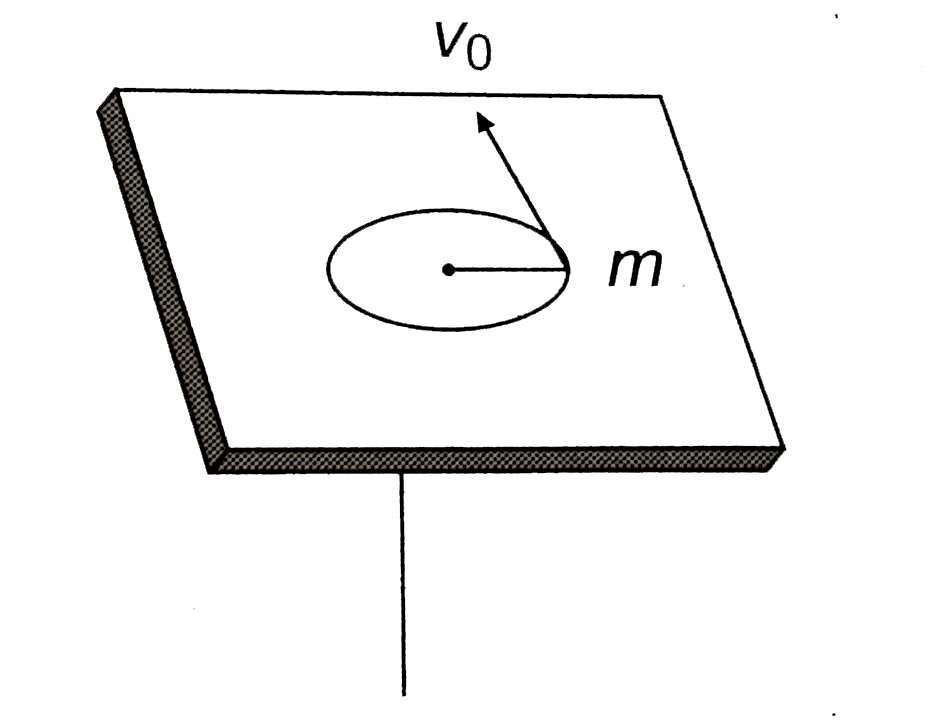
View SolutionThree idential spherical shells each of mass `m` and radius `r` are placed as shown in Fig. Consider an axis XX' which is touching the two shells and passing through diameter of third shell. Moment of Inertia of the system consisting of these three spherical shells about XX' as axis is :
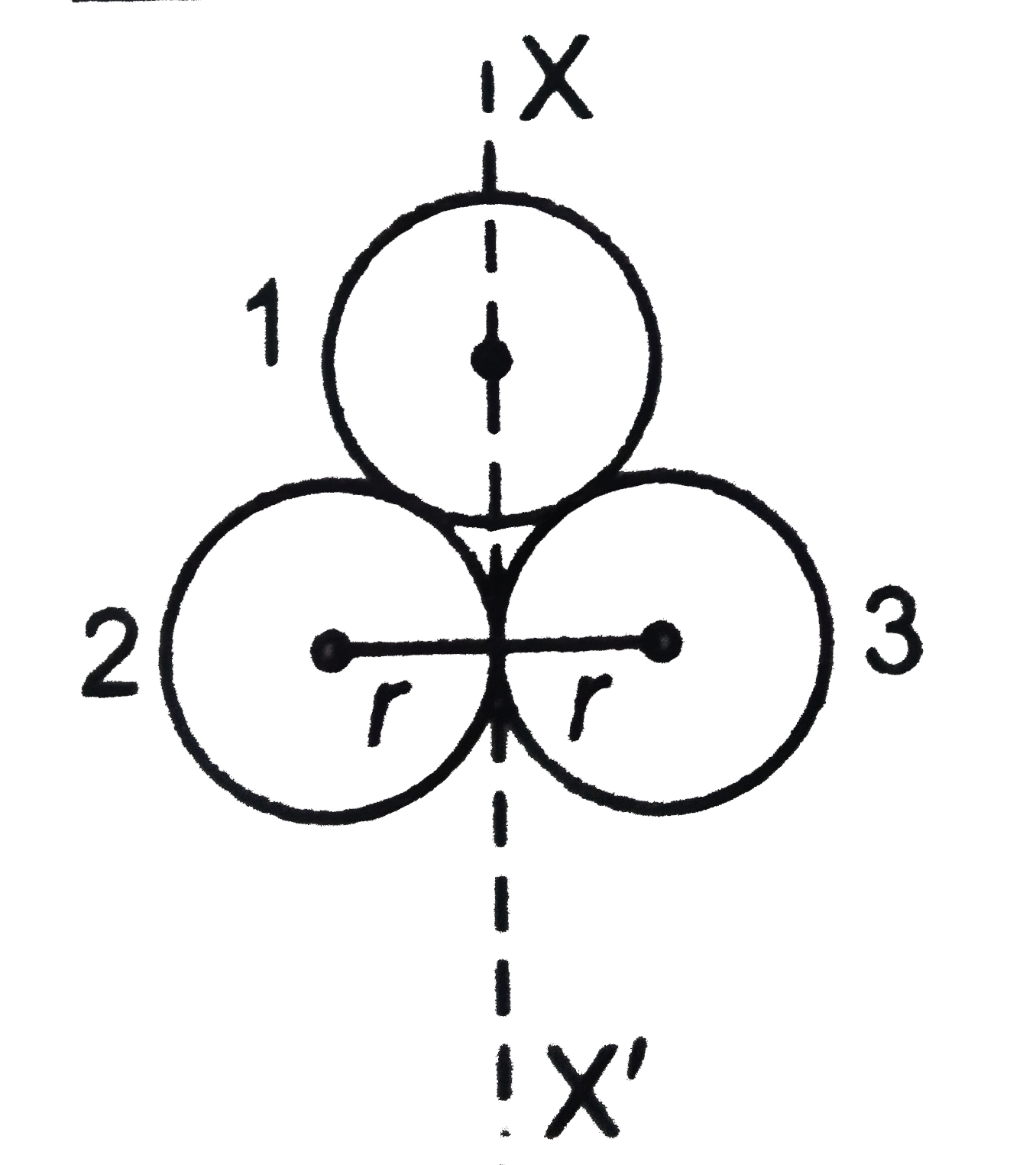
View SolutionA rod of weight `w` is supported by two parallel knife edges `A` and `B` and is in equilibrium in a horizontal position. The knives are at a distance `d` from each other. The centre of mass of the rod is at a distance `x` from `A`.
View SolutionTwo spherical bodies of mass M and 5M & radii R & 2R respectively are released in free space with initial separation between their centres equal to 12R. If they attract each other due to gravitational force only, then the distance covered by the smallar body just before collision is
View SolutionKepler's third law states that square of period revolution `(T)` of a planet around the sun is proportional to third power of average distance `i` between sun and planet i.e. `T^(2)=Kr^(3)`
here `K` is constant
if the mass of sun and planet are `M` and `m` respectively then as per Newton's law of gravitational the force of alteaction between them is `F=(GMm)/(r^(2))`, here `G` is gravitational constant. The relation between `G` and `K` is described as
View SolutionA particle is performing harmonic motion if its velocity are `v_(1)` and `v_(2)` at the displecement from the mean position are `y_(1)` and `y_(2)` respectively then its time period is
View Solutionwhen two displacements represented by `y_(1) = a sin(omega t)` and `y_(2) = b cos (omega t)` are superimposed the motion is
View SolutionA wind with speed `40 m//s` blows parallel to the roof of a house. The area of the roof is `250 m^(2)` . Assuming that the pressure inside the house is atmospheric pressure, the force exerted by the wind on the roof and the direction of the force will be : `(rho_(air)=1.2 kg//m^(3))`
View SolutionThe approximate depth of an ocean is `2700m`. The compressibility of water is `45.4xx10^(-11)Pa^-1` and density of water is `10^3(kg)/(m^3)`. What fractional compression of water will be obtained at the bottom of the ocean?
View SolutionThe fundamental frequency of a closed organ pipe of length `20 cm` is equal to the second overtone of an organ pipe open at both the ends. The length of organ pipe open at both the ends is
View SolutionIn (figure). shows two path that may be taken by a gas to go from a state A to state C
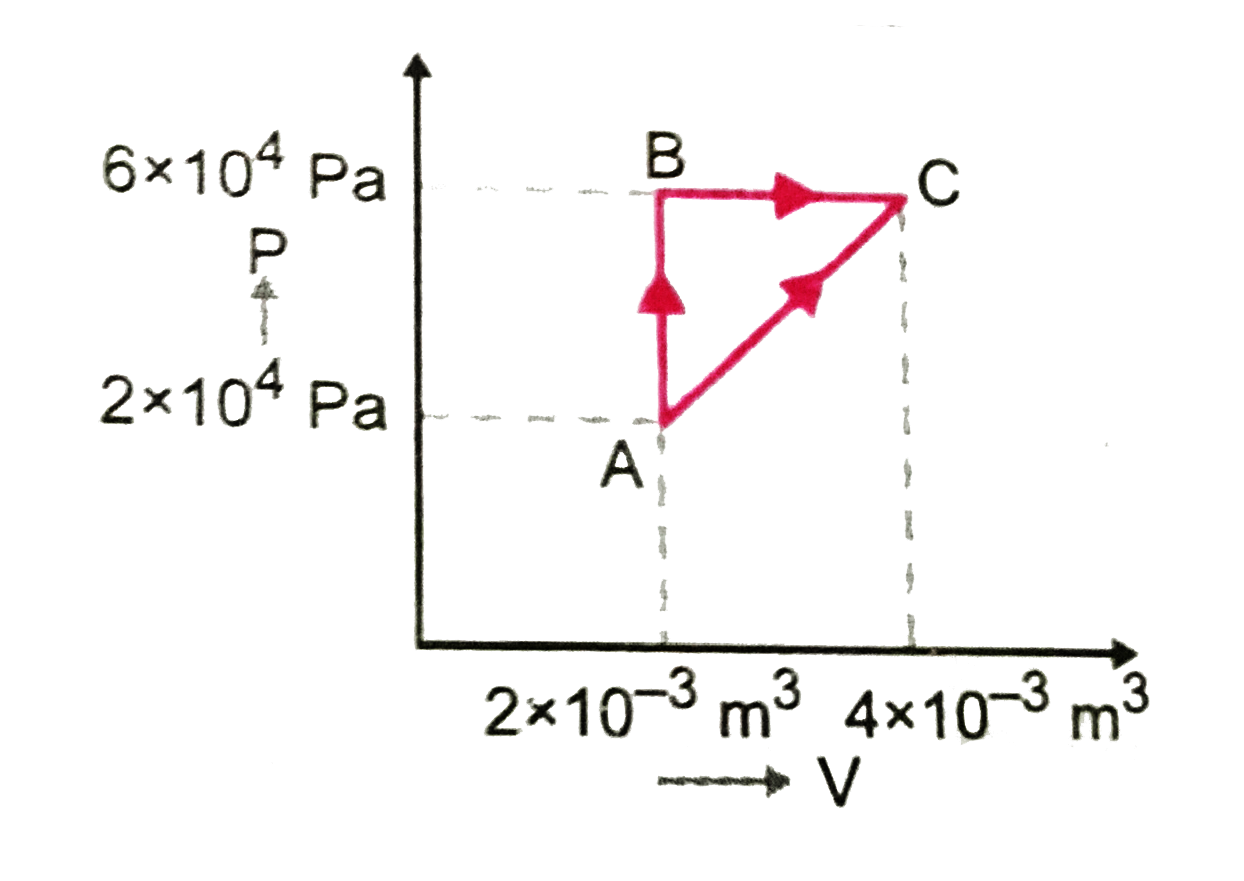
In the process AB, `400 J` of heat is added to the system and in process Bc, `100 J` of heat is added to the system. The heat absorbed by the system in the process AC will be
View SolutionOne mole of an ideal diatomic gas undergoes a transition from A to B along a path AB as shown in (figure). The change in internal energy of the gas during the transition is `(gamma=3//5)`
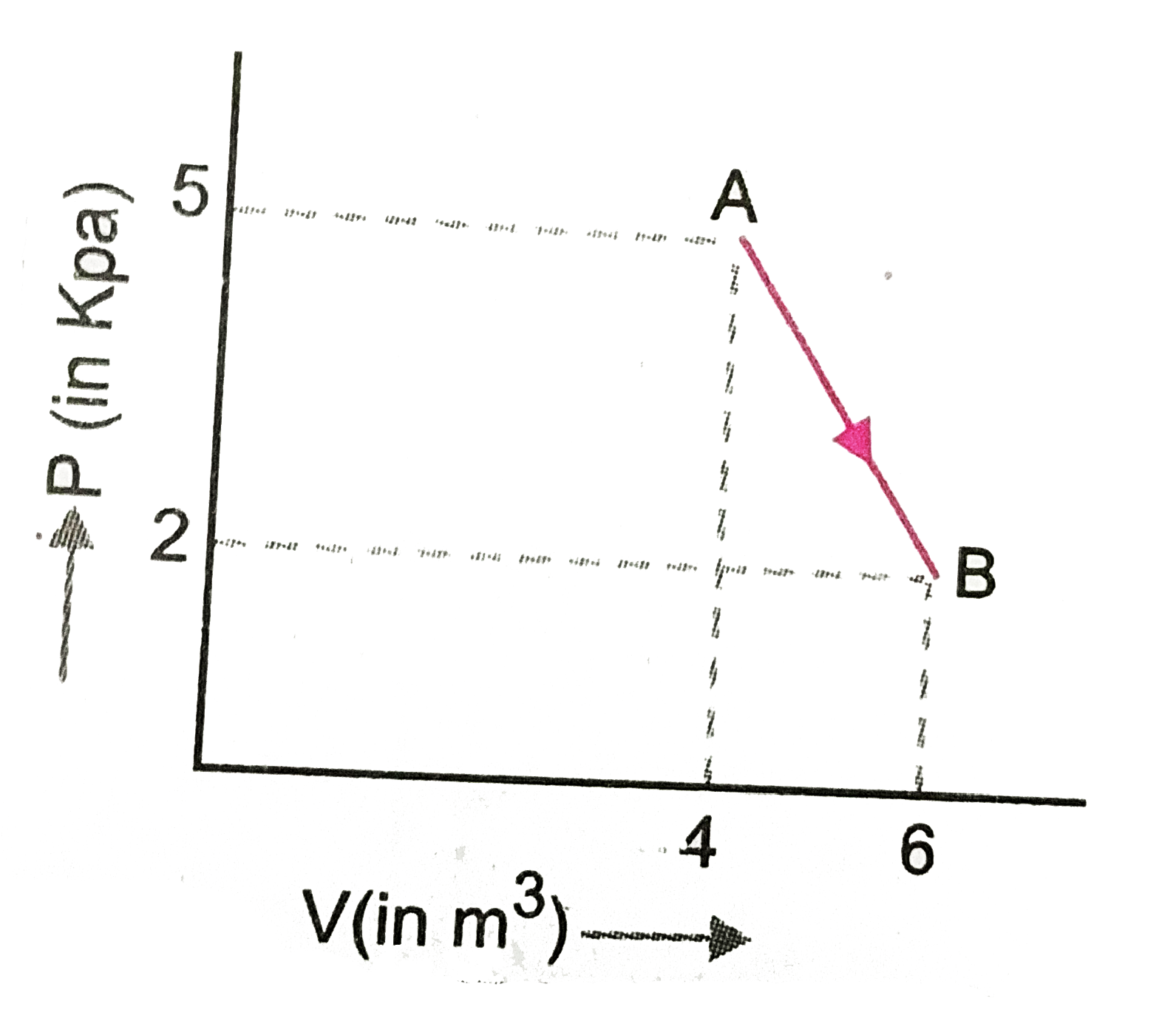
View SolutionThe ratio of the specific heats `(C_(P))/(C_(upsilon)) = gamma` in terms of degrees of freedom is given by
View SolutionA Carnot engine, having an efficiency of `eta=1//10` as heat engine, is used as a refrigerator. If the work done on the system is 10J, the amount of energy absorbed from the reservoir at lower temperature is
View SolutionThe two ends of a metal rod are maintained at temperature `100^(@)C` and `110^(@)C`. The rate of heat flow in the rod is found to be `4.0 J//s`. If the ends are maintained at temperature s `200^(@)C` and `210^(@)C`. The rate of heat flow will be
View SolutionOn observing light from three different stars `P`, `Q` and `R`, it was found that intensity of violet colour is maximum in the spectrum of `P`, the intensity of green colour is maximum in the spectrum of `R` and the intensity of red colour is maximum in the spectrum of `Q`. if `T_(P)`, `T_(Q)` and `T_(R)` are respective absolute temperature of `P`, `Q` and `R`. then it can be concluded from the above observation that
View Solution
Solved Quesitons questions and complete solutions for chapter NEET PREVIOUS YEAR of CP SINGH PHYSICS (HINGLISH) of Class 11